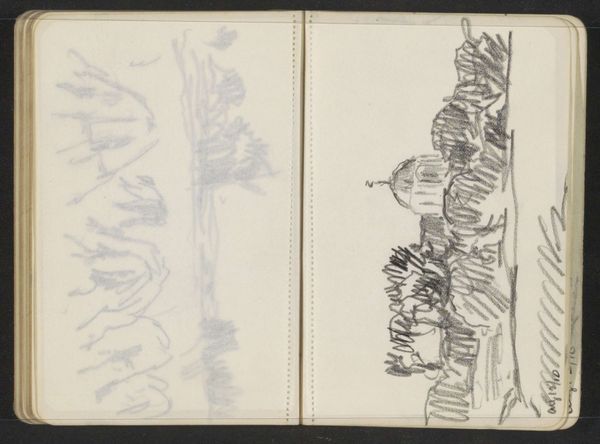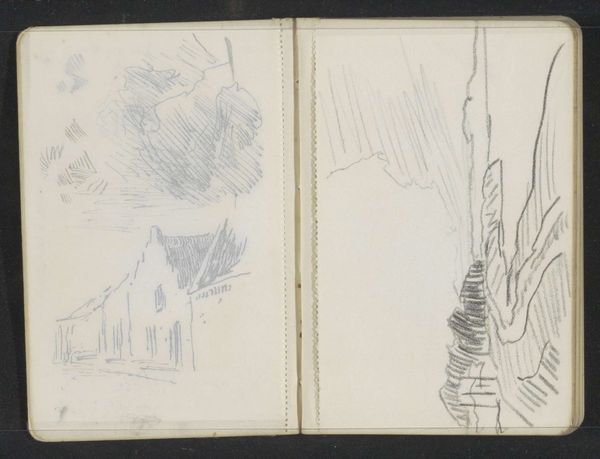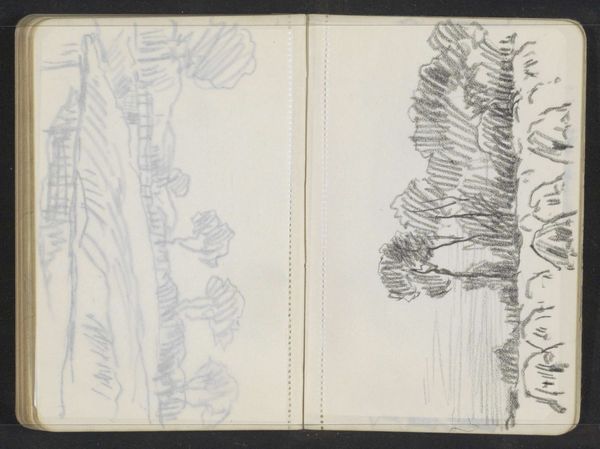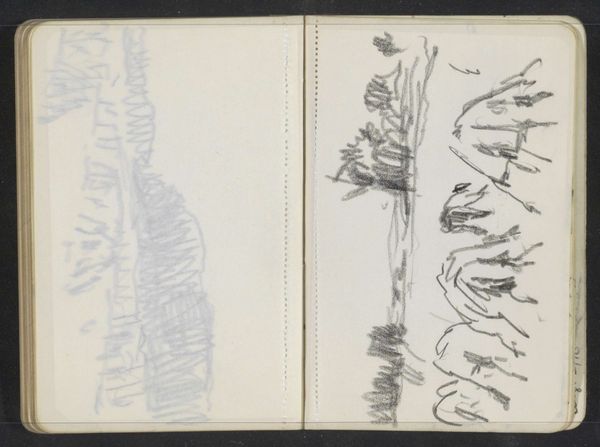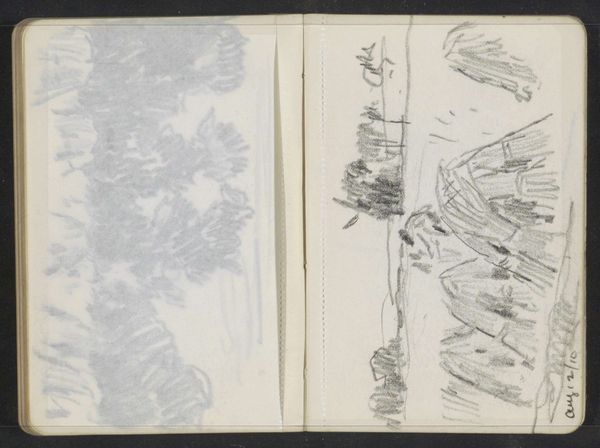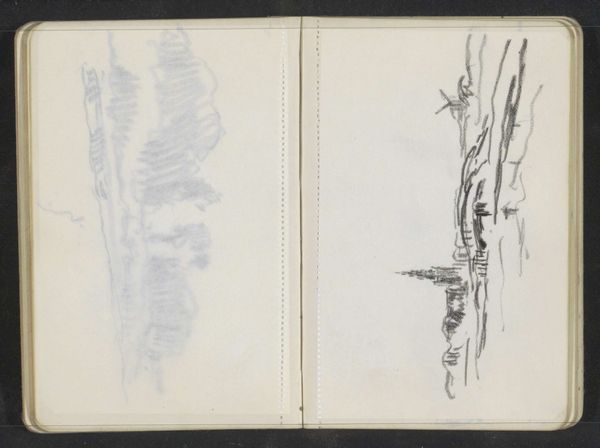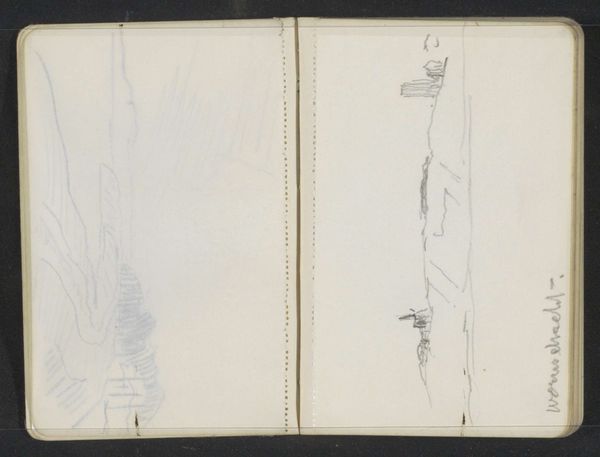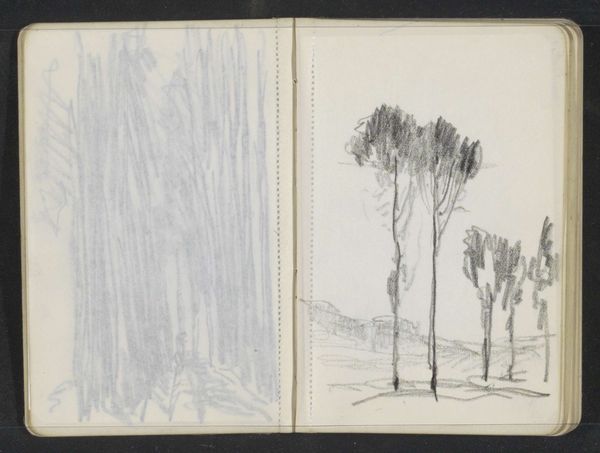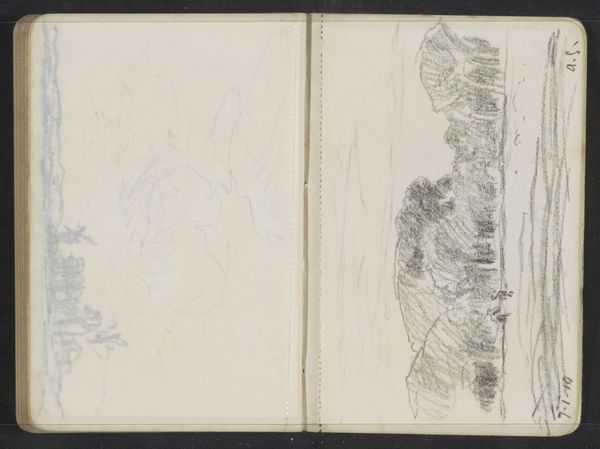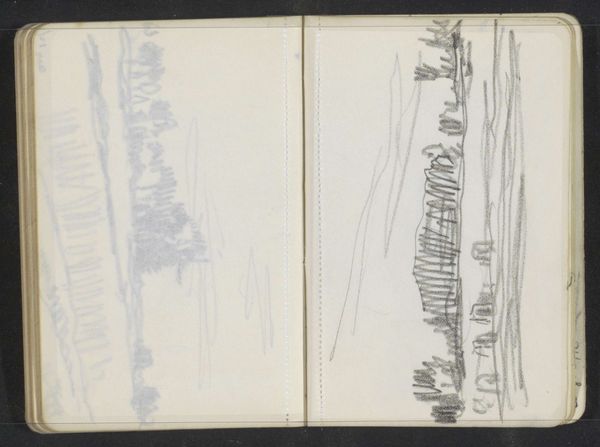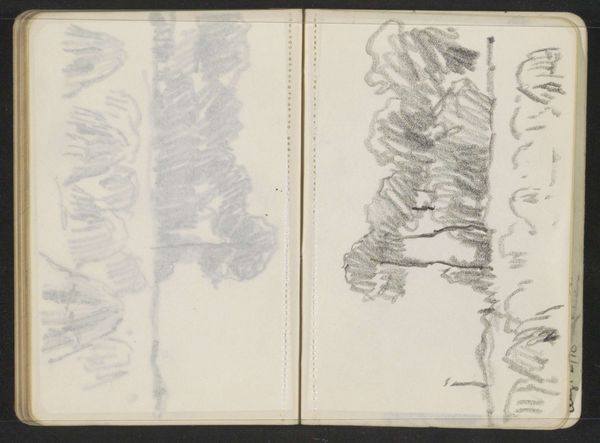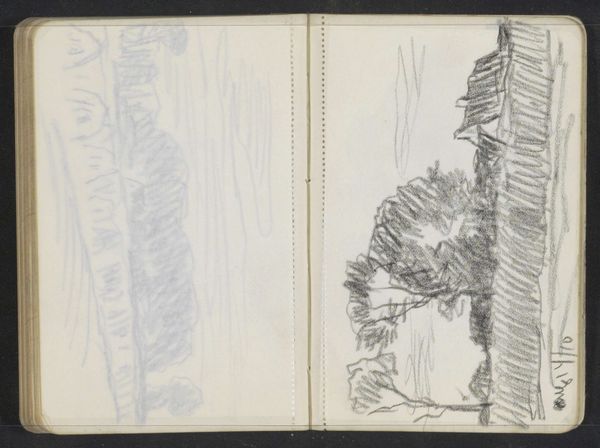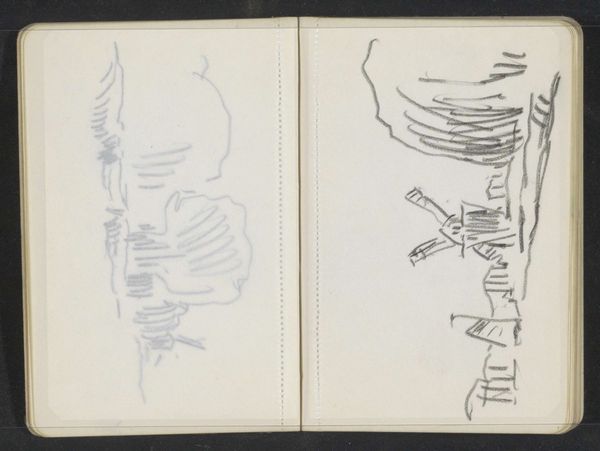
Copyright: Rijks Museum: Open Domain
Curator: This is a page from a sketchbook by Alexander Shilling, titled “Gezicht op Woensdrecht,” made in 1909 using pencil and pen. Editor: It feels sparse, doesn’t it? The composition is split cleanly between the two pages. There’s a gentleness to the landscape on the left and a rawness in the pen work on the right. Curator: Right. Shilling’s hand is evident, but what interests me are the social dynamics implicit here. Consider the materiality of the sketchbook itself – the mass-produced paper, the binding – indicators of shifting access to artistic tools. Editor: Agreed, yet that access is made beautifully manifest here. Observe how he creates depth on the left with the soft pencil lines forming a serene, almost misty vista, juxtaposed against the more forceful, angular marks describing what appears to be a building nestled against a steep embankment on the facing page. Curator: I see the contrast in technique. But to really understand it, shouldn’t we look at the context of landscape art at the time? The late 19th and early 20th centuries saw increased industrialization and urbanization. How did these social shifts manifest themselves? What meanings would have been made from an artist dedicating attention to landscape in 1909? Editor: An excellent point. The interplay of light and shadow, however, suggests that beyond any deeper narrative it’s a study in contrast and form, reflecting Impressionist ideals. The delicate lines suggest atmospheric conditions of the region, don't you agree? Curator: Perhaps. Yet consider Shilling's audience, his patrons and the very mechanisms that put food on his plate. Such patronage and support dictated certain aesthetic expectations to perpetuate economic relations. I consider it important that such factors inform our assessment, along with formal qualities. Editor: True, we have to avoid decontextualizing, but I see that the contrasting textures of the sketch direct our eye across the pages. A balanced tension between detail and suggestive absence. Curator: I agree it is an interesting work—the sketch reveals shifts in labor, consumption, and materiality. Editor: For me, its success rests in how the artist captures the essence of a fleeting moment, the mood of Woensdrecht in 1909, a place forever imprinted on these pages through line and form.
Comments
No comments
Be the first to comment and join the conversation on the ultimate creative platform.
